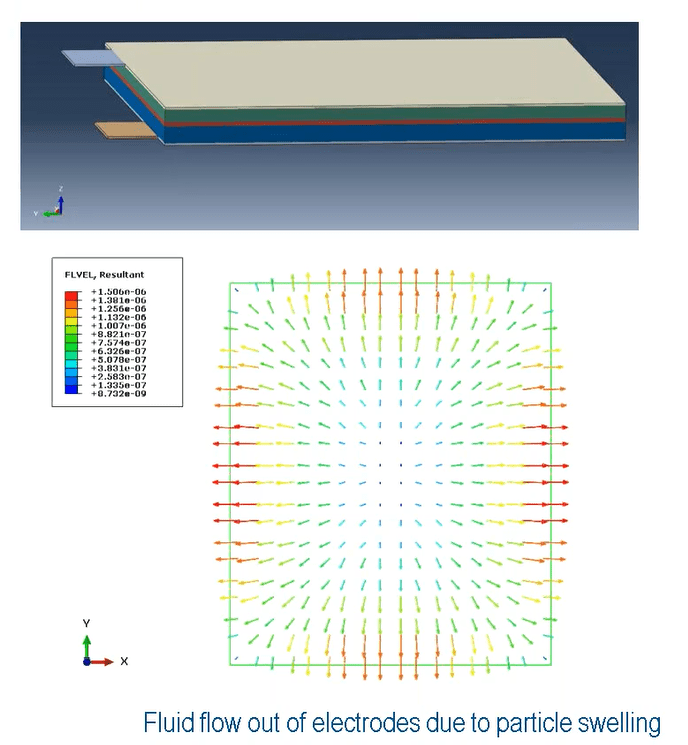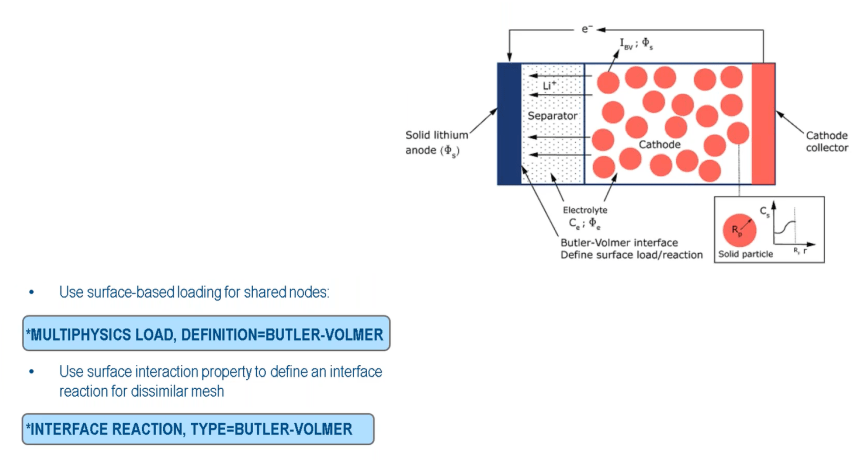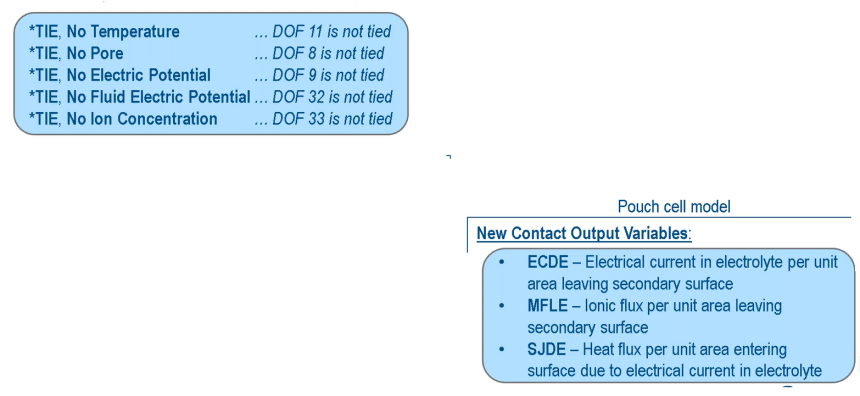Those who have been following our blog posts What’s new series might have noticed the new topic. We always had something to cover on Multiphysics updates but we never had an update on Battery. This is largely attributed to the inclusion of BIOVIA into our overall workflow offerings that has taken the battery simulation capabilities to a new level altogether. Let’s get in the battery now.
- Battery Electrochemistry Journey 2022xFD02
The image shows the Multiphysics coupling enhancements for different releases. The objective of these couplings is two fold: introduce more coupled physics for batteries and more degrees of freedom such as ion and solid particle concentration.

Benefits: The porosity of electrodes changes due to expansion and contraction of active particles in the electrode. This phenomenon is captured in the enhanced displacement – pore pressure step. Due to change in porosity, the electrolyte density changes in different regions thereby causing the pressure gradient in electrolyte within the electrode. This induces structural response in the electrode as well as flow of electrolyte. It becomes necessary to capture flow of ions along with the electrolyte. All this is modeled by coupling enhanced displacement pore-pressure step and the thermal electrochemical step.

- Lithium metal batteries 2022xFD02
These batteries have a non porous anode while the cathode and the separator are porous. Interface reaction between anode and separator is modeled using the surface based charge transfer kinetics.

- Element Library Enhancement 2023xFD01
Elements added are as follows: QEC3D4, QEC3D6, QEC3D8R
The first two are tetrahedron and prism elements for complex geometry. The third one is a reduced integration brick element for faster solve. It is possible to define the regions of battery where electro-chemistry does not occur to be modeled with conventional elements such as 3D thermal stress, shells and continuum shell elements.
- Extensive output library 2022xFD02
Whole and partial model variables, micro scale particle level outputs and macro section outputs have been added as follows:

- Contact Enhancements 2022xFD02
Electrical conductance associated with solid vs liquid interfaces.
*GAP ELECTRICAL CONDUCTANCE, TYPE=SOLID/LIQUID
Diffusion of Lithium ions across a contact interface
*GAP DIFFUSIVITY, TYPE = ION CONCENTRATION
*GAP Heat Generation to model additional sources of heat generation due to resistance.
- TIE Enhancements 2022xFD02
Conventional ties in Abaqus standard have been improved to selectively deactivate unwanted DOF’s. New output variables have also been introduced for the secondary tie surface.


